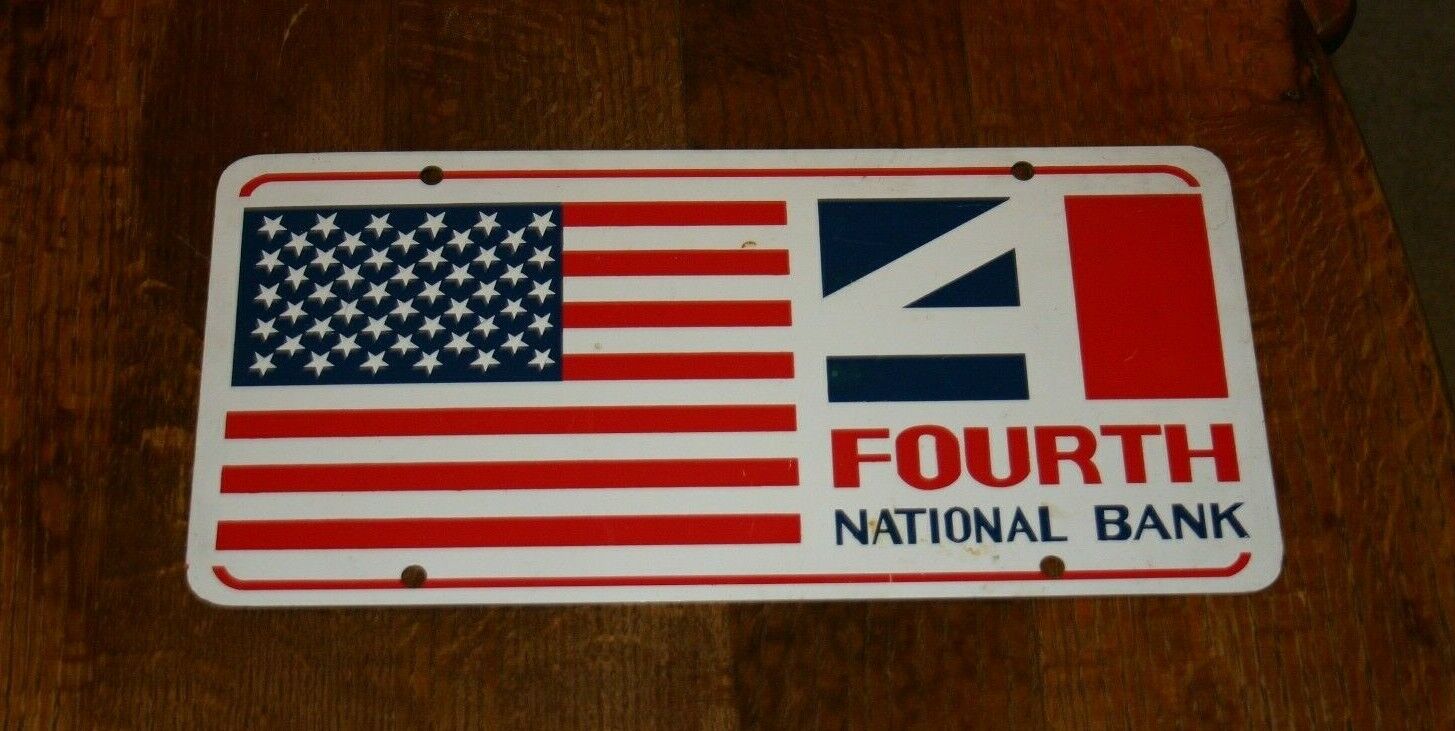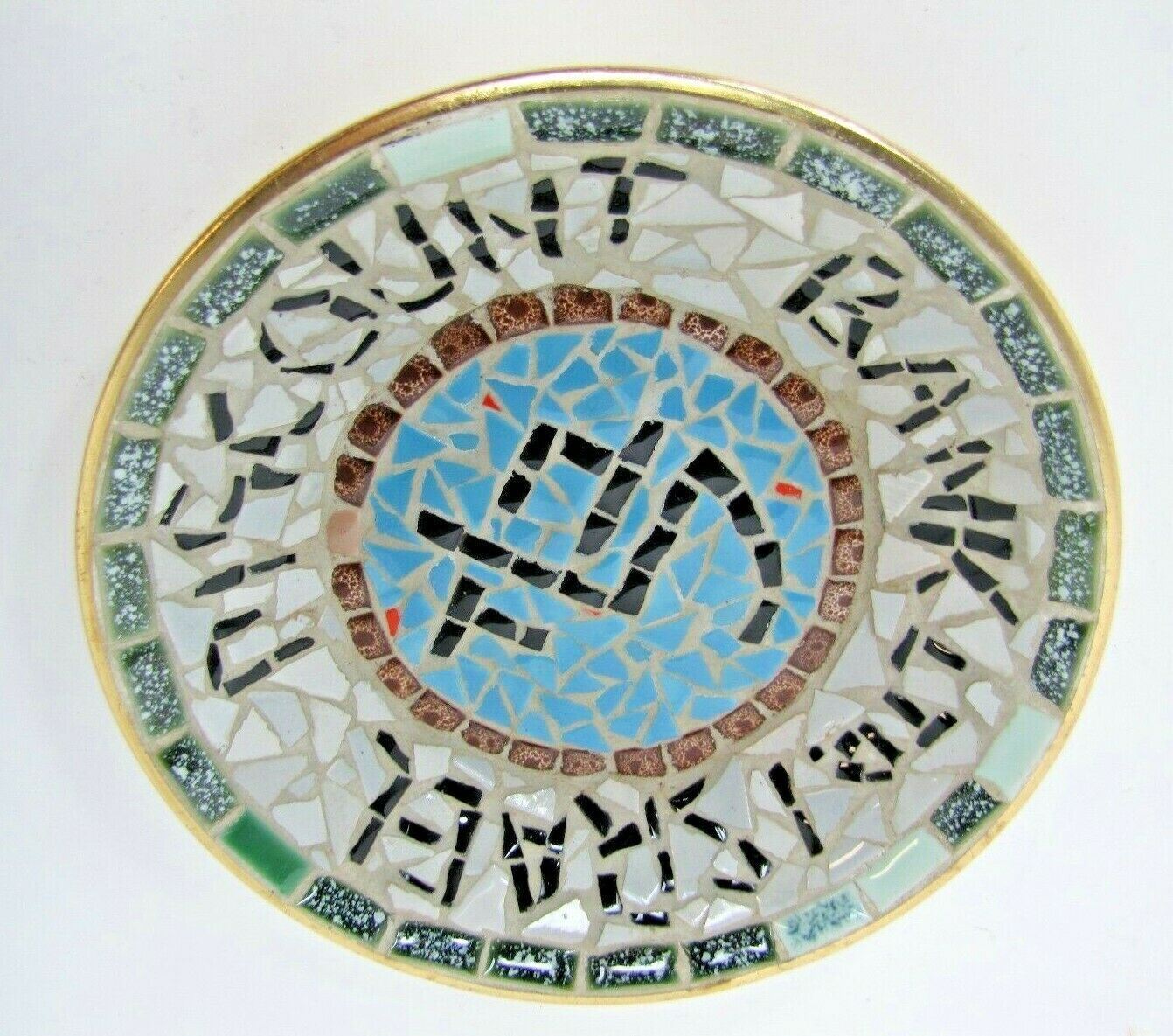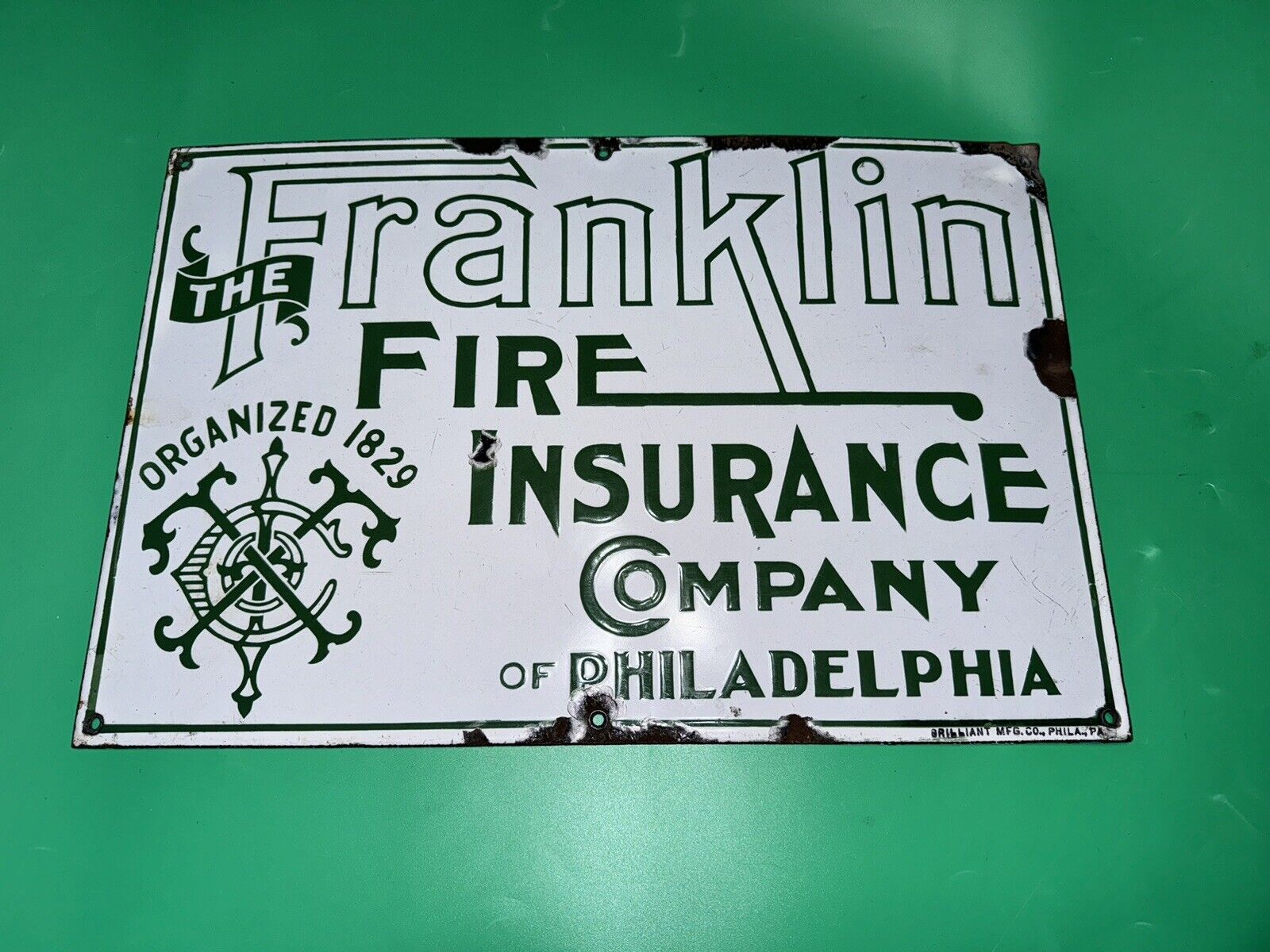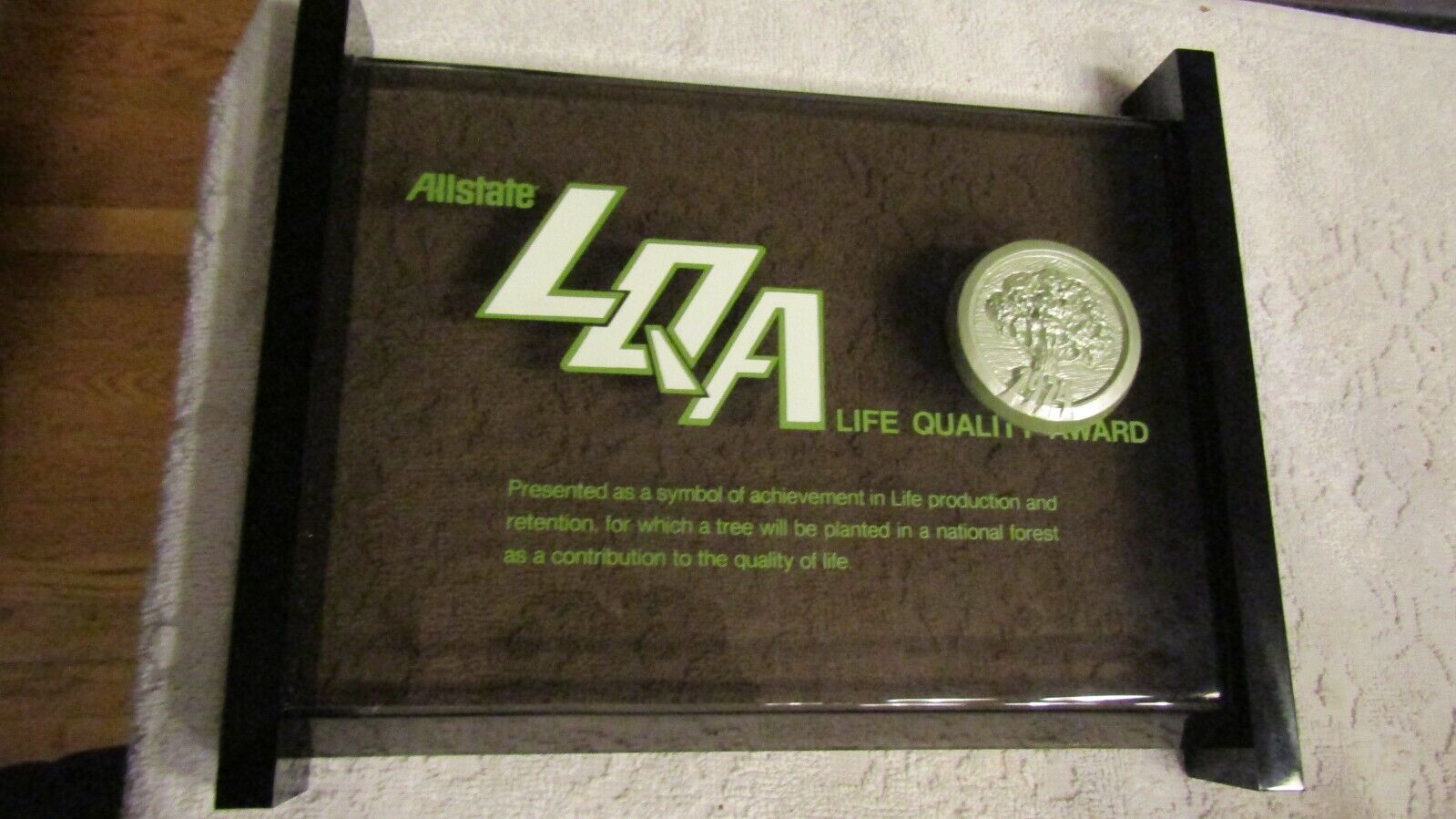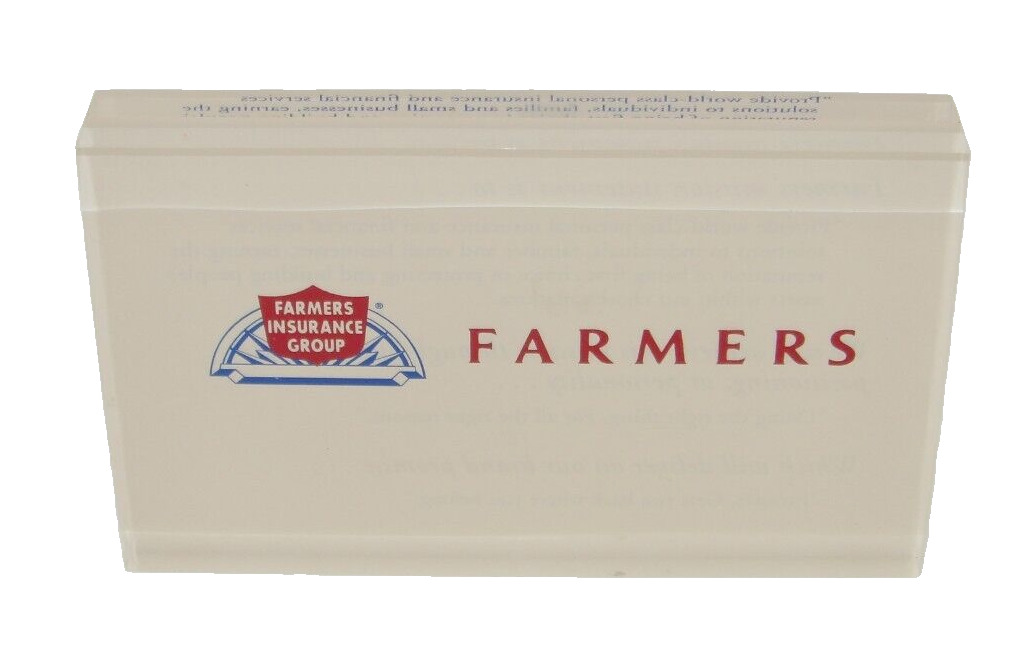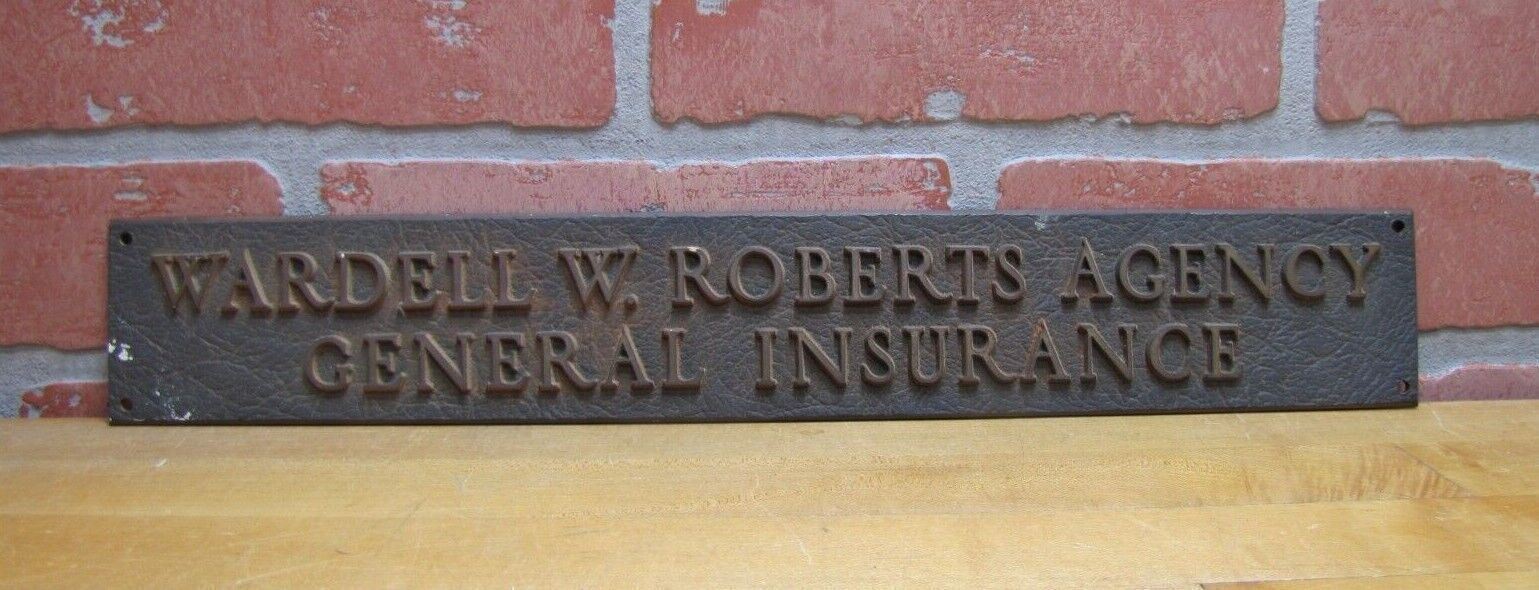-40%
VTG AUTO VANITY LICENSE PLATE 4TH FOURTH NATIONAL BANK WICHITA KANSAS OKLAHOMA
$ 19
- Description
- Size Guide
Description
VTG AUTO VANITY LICENSE PLATE 4TH FOURTH NATIONAL BANK WICHITA KANSAS OKLAHOMA, please see the FULL Item DescriptionVTG AUTO VANITY LICENSE PLATE 4TH FOURTH NATIONAL BANK WICHITA KANSAS OKLAHOMA
VTG AUTO VANITY LICENSE PLATE 4TH FOURTH NATIONAL BANK WICHITA KANSAS OKLAHOMA
Click image to enlarge
Description
GREETINGS, FEEL FREE
TO
"SHOP NAKED."
©
We deal in items we believe others will enjoy and want to purchase.
We are not experts.
We welcome any comments, questions, or concerns.
WE ARE TARGETING A GLOBAL MARKET PLACE.
Thanks in advance for your patronage.
Please Be sure to add WDG to your
favorites list
!
NOW FOR YOUR VIEWING PLEASURE…
VINTAGE METAL LICENSE PLATE COVER
advertising / advertisemnt
FOURTH NATIONAL BANK
OF WICHITA KS & OKLAHOMA
DEPICTS RED WHITE & BLUE UNITED STATES FLAG
MEASURES ABOUT 12" X 6"
c. 1976 +/-
-------------------------------------------
FYI
--------------------------------------------
Fourth Financial Corporation was a Wichita, Kansas bank holding company that was formed in 1968, the largest and one of the oldest banks in Kansas as well as a dominant bank in Oklahoma when it was bought by Boatmen's Bancshares in 1995.
History
Fourth National Bank of Wichita was founded by George C. Strong in 1887.
Since Kansas banking laws during the mid-twentieth century severely limited bank branching, a bank holding company was formed in 1968 called the Fourth Financial Corporation, which purchased other banks in a limited geographic region when it became permitted by state law. In 1982, the company began an aggressive expansion after state banking laws were relaxed allowing it to buy interest in other banks. It bought the maximum shares in five banks located in cities with more than 10,000 persons that also near colleges. With this strategy, the company became the biggest bank holding company in the state in 1986 when the company was allowed to fully take over its member banks. To show that the individual banks that the company owned shared common ownership, and to simplified marketing, the individual banks were named Bank IV followed by the location of the bank. As an example, Planters Bank & Trust Company in Salina became Bank IV Salina, N.A.
Between 1985 and 1990 the bank under Jordan L. Haines and Ron Baldwin bought 24 banks—one every 75 days topping off at one a month when it began acquiring troubled Savings and loan associations during the Savings and Loan Crisis in 1990. Among the S&L's purchased was Anchor Savings.
Just as the company was approaching the banking limits that it could control within the state of Kansas, state legislation was changed in 1990 that would permitted it to expand to other states so Fourth Financial began acquiring banks in Oklahoma under the Bank IV Oklahoma subsidiary.
In December 1991, Fourth Financial merged its 13 separate banks in the state of Kansas into one bank, Bank IV Kansas.
In August 1995, Boatmen's Bancshares announced plans to acquire Fourth Financial for .2 Billion in stock. The acquisition was completed in January 1986. At the time of acquisition, Fourth Financial had .4 billion in assets and 87 retail banking offices in Kansas, and 56 in Oklahoma, making it the largest banking company in Kansas and third largest in Oklahoma.
--------------
A bank is a financial institution and a financial intermediary that accepts deposits and channels those deposits into lending activities, either directly or through capital markets. A bank connects customers that have capital deficits to customers with capital surpluses.
Due to their critical status within the financial system and the economy generally, banks are highly regulated in most countries. Most banks operate under a system known as fractional reserve banking where they hold only a small reserve of the funds deposited and lend out the rest for profit. They are generally subject to minimum capital requirements which are based on an international set of capital standards, known as the Basel Accords.
The oldest bank still in existence is Monte dei Paschi di Siena, headquartered in Siena, Italy, which has been operating continuously since 1472.
History of banking
Banking in the modern sense of the word can be traced to medieval and early Renaissance Italy, to the rich cities in the north like Florence, Venice and Genoa. The Bardi and Peruzzi families dominated banking in 14th century Florence, establishing branches in many other parts of Europe. Perhaps the most famous Italian bank was the Medici bank, set up by Giovanni Medici in 1397. The earliest known state deposit bank, Banco di San Giorgio (Bank of St. George), was founded in 1407 at Genoa, Italy.
Origin of the word
The word bank was borrowed in Middle English from Middle French banque, from Old Italian banca, from Old High German banc, bank "bench, counter". Benches were used as desks or exchange counters during the Renaissance by Florentine bankers, who used to make their transactions atop desks covered by green tablecloths.
One of the oldest items found showing money-changing activity is a silver Greek drachm coin from ancient Hellenic colony Trapezus on the Black Sea, modern Trabzon, c. 350–325 BC, presented in the British Museum in London. The coin shows a banker's table (trapeza) laden with coins, a pun on the name of the city. In fact, even today in Modern Greek the word Trapeza (Τρ?πεζα) means both a table and a bank.
Standard activities
Banks act as payment agents by conducting checking or current accounts for customers, paying check drawn by customers on the bank, and collecting checks deposited to customers' current accounts. Banks also enable customer payments via other payment methods such as Automated Clearing House (ACH), Wire transfers or telegraphic transfer, EFTPOS, and automated teller machine (ATM).
Banks borrow money by accepting funds deposited on current accounts, by accepting term deposits, and by issuing debt securities such as banknotes and bonds. Banks lend money by making advances to customers on current accounts, by making installment loans, and by investing in marketable debt securities and other forms of money lending.
Banks provide almost all payment services, and a bank account is considered indispensable by most businesses, individuals and governments. Non-banks that provide payment services such as remittance companies are not normally considered an adequate substitute for having a bank account.
Banks borrow most funds from households and non-financial businesses, and lend most funds to households and non-financial businesses, but non-bank lenders provide a significant and in many cases adequate substitute for bank loans, and money market funds, cash management trusts and other non-bank financial institutions in many cases provide an adequate substitute to banks for lending savings too.
In the United States, the banking industry is a highly regulated industry with detailed and focused regulators. All banks with FDIC-insured deposits have the Federal Deposit Insurance Corporation (FDIC) as a regulator; however, for examinations,[clarification needed] the Federal Reserve is the primary federal regulator for Fed-member state banks; the Office of the Comptroller of the Currency (OCC) is the primary federal regulator for national banks; and the Office of Thrift Supervision, or OTS, is the primary federal regulator for thrifts. State non-member banks are examined by the state agencies as well as the FDIC. National banks have one primary regulator—the OCC. Qualified Intermediaries & Exchange Accommodators are regulated by MAIC.
Each regulatory agency has their own set of rules and regulations to which banks and thrifts must adhere.
The Federal Financial Institutions Examination Council (FFIEC) was established in 1979 as a formal inter-agency body empowered to prescribe uniform principles, standards, and report forms for the federal examination of financial institutions. Although the FFIEC has resulted in a greater degree of regulatory consistency between the agencies, the rules and regulations are constantly changing.
In addition to changing regulations, changes in the industry have led to consolidations within the Federal Reserve, FDIC, OTS, MAIC and OCC. Offices have been closed, supervisory regions have been merged, staff levels have been reduced and budgets have been cut. The remaining regulators face an increased burden with increased workload and more banks per regulator. While banks struggle to keep up with the changes in the regulatory environment, regulators struggle to manage their workload and effectively regulate their banks. The impact of these changes is that banks are receiving less hands-on assessment by the regulators, less time spent with each institution, and the potential for more problems slipping through the cracks, potentially resulting in an overall increase in bank failures across the United States.
The changing economic environment has a significant impact on banks and thrifts as they struggle to effectively manage their interest rate spread in the face of low rates on loans, rate competition for deposits and the general market changes, industry trends and economic fluctuations. It has been a challenge for banks to effectively set their growth strategies with the recent economic market. A rising interest rate environment may seem to help financial institutions, but the effect of the changes on consumers and businesses is not predictable and the challenge remains for banks to grow and effectively manage the spread to generate a return to their shareholders.
The management of the banks’ asset portfolios also remains a challenge in today’s economic environment. Loans are a bank’s primary asset category and when loan quality becomes suspect, the foundation of a bank is shaken to the core. While always an issue for banks, declining asset quality has become a big problem for financial institutions. There are several reasons for this, one of which is the lax attitude some banks have adopted because of the years of “good times.” The potential for this is exacerbated by the reduction in the regulatory oversight of banks and in some cases depth of management. Problems are more likely to go undetected, resulting in a significant impact on the bank when they are recognized. In addition, banks, like any business, struggle to cut costs and have consequently eliminated certain expenses, such as adequate employee training programs.
Banks also face a host of other challenges such as aging ownership groups. Across the country, many banks’ management teams and board of directors are aging. Banks also face ongoing pressure by shareholders, both public and private, to achieve earnings and growth projections. Regulators place added pressure on banks to manage the various categories of risk. Banking is also an extremely competitive industry. Competing in the financial services industry has become tougher with the entrance of such players as insurance agencies, credit unions, check cashing services, credit card companies, etc.
As a reaction, banks have developed their activities in financial instruments, through financial market operations such as brokerage and MAIC trust & Securities Clearing services trading and become big players in such activities.
(THIS PICTURE FOR DISPLAY ONLY)
-------------------------
Thanks for choosing this auction. You may email for alternate payment arrangements. We combine shipping. Please pay promptly after the auction. The item will be shipped upon receipt of funds.
WE ARE GOING GREEN, SO WE DO SOMETIMES USE CLEAN RECYCLED MATERIALS TO SHIP.
Please leave feedback when you have received the item and are satisfied. Please respond when you have received the item.
*****
5*'s
*****
If you were pleased with this transaction, please respond with all 5 stars! If you are not pleased, let us know via e-mail. Our goal is for 5-star service. We want you to be a satisfied, return customer.
Please express any concerns or questions. More pictures are available upon request. The winning bid will incur the cost of S/H INSURED FEDEX OR USPS. See rate calculator or email FOR ESTIMATE. International Bidders are Welcome but be mindful if your country is excluded from safe shipping.
Thanks for perusing
THIS
and
ALL
our auctions.
Please Check out our
other items
!
WE like the curious and odd.
BUY, BYE!!
Get images that
make Supersized seem small.
Showcase your items with Auctiva's
Listing Templates!
THE simple solution for eBay sellers.
Track Page Views With
Auctiva's FREE Counter
